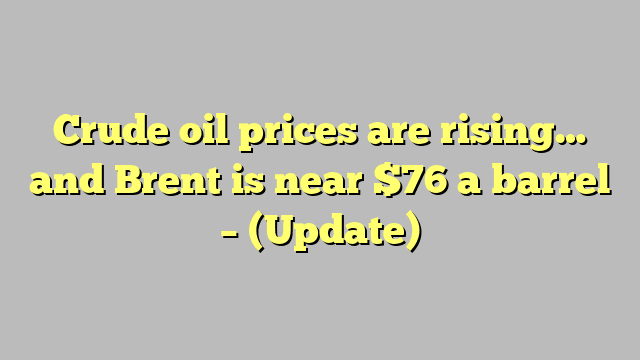Crude oil prices rose for the first time in 3 consecutive sessions at the end of trading today, Monday, May 22, 2023, after a volatile session, amid fears of an economic recession that might limit demand.
Caution about US debt ceiling talks and concerns about demand recovery in China offset support from lower supplies from Canada and OPEC+ producers.
Crude oil prices today
At the end of the session, Brent crude futures contracts – for delivery in July 2023 – rose 0.5%, to $ 75.99 a barrel.
West Texas Intermediate crude futures – for June 2023 delivery – also rose by 0.6%, to record a barrel of $71.99, according to information seen by the specialized energy platform.
On Friday, May 19, crude oil prices ended in decline, but achieved their first weekly gains in 5 weeks.
During the past week, Brent and West Texas Intermediate crude prices achieved gains of about 1.9% and 2.2%, respectively, recording their first weekly rise in 5 weeks.
Oil price analysis
“The US is the world’s largest oil consumer, and investors are also concerned that China’s recovery is stalling after weak economic data reports in the past two weeks,” said VIG analyst Tony Sycamore.

“If the housing market continues to decline and policymakers fail to respond, the risk of a double slowdown in China – the world’s largest crude oil importer and second oil consumer – increases, which bodes bad news for crude oil consumption and demand,” Sycamore added.
Last week, both crude oil benchmarks rose nearly 2%, their first weekly gain in 5 weeks, after wildfires shut down large amounts of crude oil supplies in Alberta, Canada.
oil supplies
Analysts from Goldman Sachs and JPMorgan said the impact of voluntary production cuts by the Organization of the Petroleum Exporting Countries (OPEC) and its allies, including Russia, known as the OPEC+ alliance, is also being felt after it took effect this month.
JPMorgan said total exports of crude oil and oil products from the group fell 1.7 million barrels per day by May 16, adding that Russian oil exports would likely decline by late May.
On Saturday, the Group of Seven nations pledged at their annual leaders’ meeting to step up efforts to counter Russia’s evasion of capping prices for its oil and fuel exports “while avoiding spillovers and preserving global energy supplies.”
The Executive Director of the International Energy Agency, Fatih Birol, said that these reinforcements are not expected to change the supply situation for crude and oil products, adding that the agency is committed to analyzing it at the present time.
demand for oil
In its latest monthly report, the International Energy Agency warned of a looming shortage in the second half; As demand is expected to exceed supply by about two million barrels per day.
“It remains to be seen if the new restrictions will affect Russian oil production, as the Russians have been very effective in finding ways to get around European and US sanctions, and the sanctions have proven difficult to implement,” said VIG analyst Tony Sycamore, according to Reuters.
For its part, energy services company Baker Hughes announced that the number of US oil rigs decreased by 11 to 575 in the week ending May 19, which is the largest weekly decline since September 2021.
ING said: “The slowdown in US drilling activity is a source of concern for the oil market, which is expected to witness a large deficit during the second half of this year.”
related topics..
Also read..

Leave a Reply